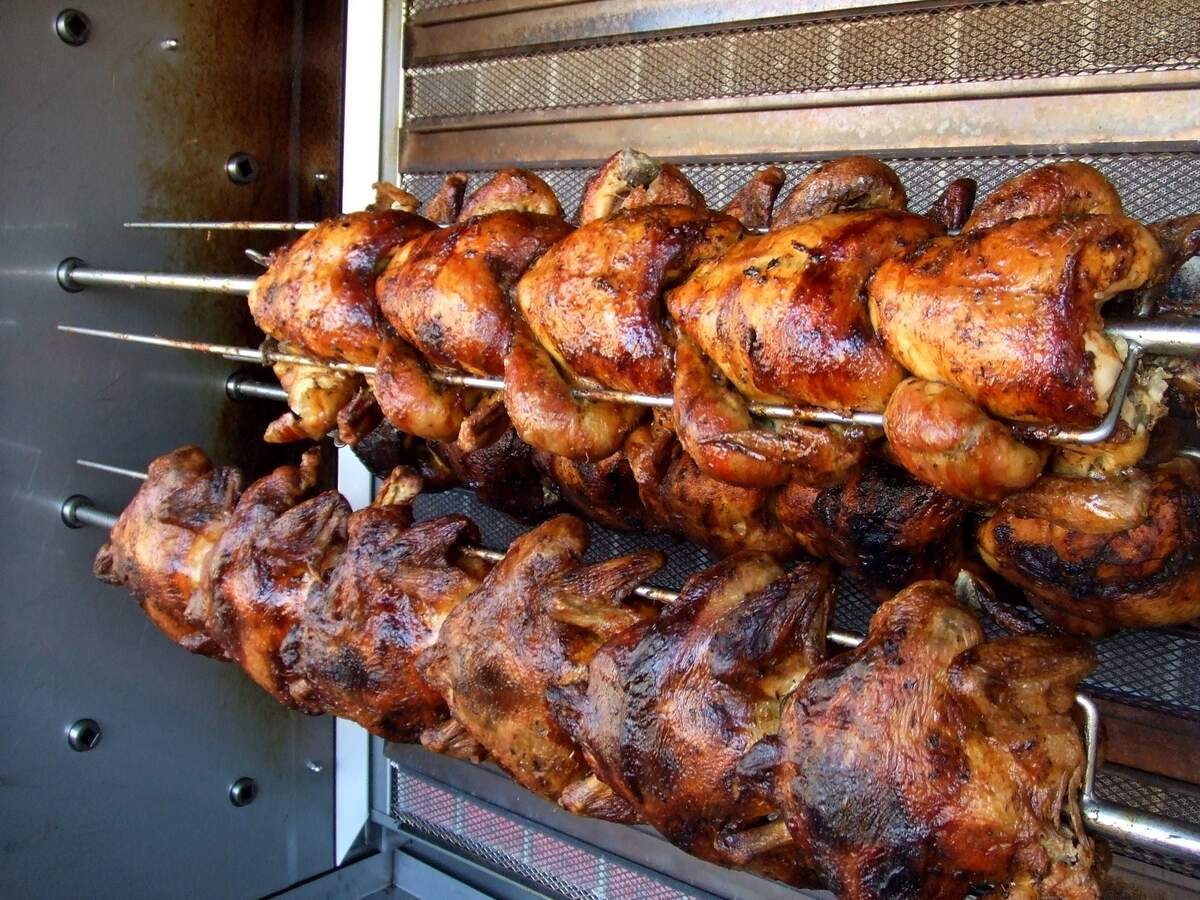

National Rotisserie Chicken Day
Observed
annually on June 2nd (since 2015)
Dates
Founded by
Boston Market Corporation in April 2015
Tags
Food & Drink
Hashtags
Sources
https://quakervalleyfoods.com/celebrate-with-quaker-valley-foods/
https://www.denverpost.com/2015/06/22/happy-national-rotisserie-chicken-day-with-thanks-to-boston-market/
https://www.freep.com/story/life/food/susan-marie/2015/06/02/national-rotisserie-chicken-day/28366613/
https://www.instagram.com/p/CeT2tLAOvde/
https://www.mashed.com/1391568/how-rotisserie-chickens-became-popular/
https://www.upi.com/Odd_News/2022/06/02/National-Rotisserie-Chicken-Day/7931654115856/
Rotisserie chickens are celebrated and eaten today on National Rotisserie Chicken Day. "We wanted to come back and remind people who we were and what we do best," stated Boston Market, a restaurant that specializes in rotisserie chicken and home-style meals, and also created the day. Boston Market cooks their rotisserie chickens in about an hour and a half's time, and they serve them within two hours of roasting. The whole chicken is cooked on a rotisserie or spit, which seals the skin, in turn, sealing in the flavor, making the chicken tender and juicy. They have offered specials in honor of National Chicken Rotisserie Day. For example, they sold their rotisserie chickens for $6.02 on the day in 2022.
Rotisserie chickens are cooked as a spit turns over open heat. The chicken is sometimes injected with a blend of seasonings to enhance the flavor even more. Leftovers can be used to make soups, salads, sandwiches, and casseroles.
Rotisserie chicken dates to the Middle Ages, when meat was turned manually over fires for hundreds of years. Hog was the most popular meat to roast over fires, but chickens were roasted too, as well as other fowl like duck, pheasant, goose, partridge, and swan. Although, chickens were roasted less at the time because they were prized for their eggs; usually only the older chickens that didn't lay eggs anymore were roasted. There were several variations of rotisserie chicken during the Middle Ages. For instance, in around 1450 a recipe called Chicken Endored was common, which was cooked with a batter made with saffron, ginger, pepper, and salt. Chickens were also stuffed with grapes, onions, and herbs like sage and parsley in the Middle Ages.
In 1950, Roger Schuler, a Swiss immigrant running a chicken farm near Lima, Peru, began selling young cooked chickens. He used a saltwater marinade on them, then cooked them over Algarrobo coals—coming from the Chilean mesquite tree—and in the process invented pollo a la brasa, or "chicken over coals." Schuler put up a sign that said customers could eat as much chicken as they wanted for five soles.
In the mid-twentieth century, mechanized devices began being used to rotate the chicken. Schuler asked his friend Franz Ulrich,an owner of a metal shop, to help him build an oven to cook the chicken in. He came up with a device, "El Rotombo," that held the chickens over a fire on a long spit, cooking them in a similar fashion as a rotisserie oven. They then opened the chicken restaurant La Granja Azul, which is still open today. The recipe they created now includes ingredients like pepper, rosemary, huacatay (Peruvian black mint), aji panca (Peruvian red pepper), and cumin.
In Hawaii, a style of rotisserie chicken called huli-huli chicken, basted with a sweet sauce and grilled over mesquite, was created in 1955 by former World War II naval intelligence officer Ernest Morgado. He first grilled it at a farmer's meeting, and when it was well-received, he started selling the smoky, sweet, and sticky chicken at fundraisers.
Boston Market, known as Boston Chicken from 1985 until 1995, when it became Boston Market Corporation, was founded in Newtonville, Massachusetts, by Kip Kolow and Arthur Cores. Kolow had eaten rotisserie chickens at local delis while growing up, and the chickens became a staple on the Boston Chicken menu, being cooked in a roasting oven that had seven spits that could hold five chickens each—that's 35 chickens! Each spit rotated, causing drippings from a chicken to fall onto the bird below it, making the meat more flavorful and the skin crispy. Rotisserie chickens were marketed as convenient meals for those on the go. Boston Chicken became responsible for increasing the popularity of rotisserie chickens in the 1980s—the rotisserie chicken is what it is today because of them, just as today's holiday exists because of them.
Rotisserie chicken is sold in many supermarkets today. It is a cheap food, with little preparation time, and the carcass can be used to make broth for another meal. Costco and Kroger were selling them by 1994, and by 1998 the ranks of Albertsons and Safeway had joined in. Some supermarkets consider it a loss leader, an item that doesn't make money but brings people in to buy other items. Side dishes that are more profitable are often placed next to the chickens. Costco sells over 100 million rotisserie chickens each year. They are known for keeping the price low, with it being at $4.99 for decades. Whether rotisserie chickens are bought in a supermarket like Costco or a restaurant like Boston Market, they are here to stay and are especially celebrated today on National Rotisserie Chicken Day.
How to Observe National Rotisserie Chicken Day
- Have rotisserie chicken at Boston Market. Keep an eye out for specials they've offered on the day in past years.
- Enjoy some Costco rotisserie chicken or pick rotisserie chicken up from somewhere else.
- Buy a rotisserie oven and make a rotisserie chicken at home.
- Use leftover rotisserie chicken in a recipe. Use it to make soup, salads, sandwiches, or a casserole.
- Pick up a book like National Rotisserie Chicken Day: Turn The Chicken Tide and Skip The Fried or 101 Things To Do With Rotisserie Chicken.
- Share photos on social media of yourself celebrating with family and friends and accompany it with the hashtag #RotisserieChickenDay. Include photos of rotisserie chickens as well as recipes.





















